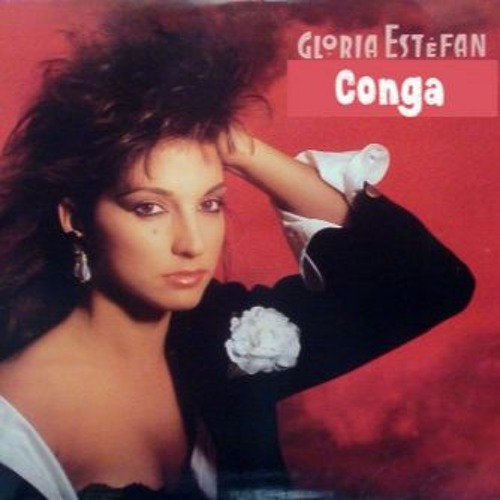Gloria Estefan is a name that resonates across cultures, continents, and generations. Among her countless achievements, Conga stands as a transformative moment in her career and a milestone in music history. Released in 1985 by Gloria and the Miami Sound Machine, Conga revolutionized the industry, blending Latin rhythms with infectious pop melodies to create a sound that was fresh, vibrant, and universally irresistible.
This groundbreaking track didn’t just catapult Gloria Estefan to international fame; it opened the door for Latin music to enter the mainstream, bridging cultural divides and paving the way for future artists.
The Vision Behind Conga

Conga wasn’t born out of a traditional formula—it was an experiment, a creative vision to fuse Latin beats with pop influences. Written by Enrique “Kiki” Garcia, Gloria Estefan, and Emilio Estefan, the song reflected the group’s commitment to crafting something unique that could resonate with a global audience.
Initially performed in a Miami nightclub, Conga captivated the crowd with its energetic rhythm and dynamic sound. The overwhelming response inspired the band to record and release it as a single. Little did they know that this experiment would soon become a cultural phenomenon.
A Fusion of Rhythms and Genres
What makes Conga so iconic is its masterful fusion of musical elements. The song incorporates traditional Latin percussion instruments like congas, bongos, and timbales, layered with synthesizers, brass sections, and a driving pop beat. The result? An irresistible rhythm that compelled listeners to hit the dance floor, regardless of their cultural background.
Gloria Estefan’s powerful and joyous vocals added the perfect touch, exuding energy that invited everyone to join the celebration. The iconic chorus—“Come on, shake your body baby, do the conga”—became a universal anthem, ensuring the song’s place in party playlists worldwide.
Breaking Barriers and Shaping Music History
Conga wasn’t just a hit; it was a trailblazer. At a time when rock and mainstream pop dominated the American music scene, Conga introduced audiences to the rich, rhythmic sounds of Latin music. It proved that music could transcend cultural boundaries, uniting people through a shared love of rhythm and dance.
The song’s success paved the way for other Latin artists to find global recognition. Stars like Shakira, Ricky Martin, and Jennifer Lopez owe part of their crossover success to the path Gloria Estefan and the Miami Sound Machine carved with Conga.
Chart-Topping Success and Global Acclaim

Conga achieved unprecedented success, becoming the first song ever to simultaneously appear on Billboard’s pop, dance, black, and Latin charts. This groundbreaking feat underscored its universal appeal and cemented Gloria Estefan’s status as a global icon.
The song’s popularity extended far beyond the charts. It became a cultural touchstone, played at weddings, parties, and celebrations around the world. Its presence in television, film, and live performances only amplified its impact, ensuring its place in the collective memory of music lovers.
The Power of Live Performances
One of the key reasons Conga became such a phenomenon was Gloria Estefan’s electrifying live performances. Whether on sold-out tours or televised events like the Grammys, her dynamic energy and magnetic stage presence captivated audiences.
Her ability to connect with fans, combined with the visual appeal of choreographed dance moves, turned Conga into a complete sensory experience. It wasn’t just a song—it was a celebration of life and culture.
The Enduring Legacy of Conga

Decades after its release, Conga remains a timeless classic. Its infectious rhythm and universal message of joy continue to resonate with audiences of all ages. Few songs have the power to bring people together the way Conga does, and its enduring popularity speaks to its brilliance as a composition and cultural milestone.
For Gloria Estefan, Conga was the foundation of an illustrious career that includes numerous hits, Grammy Awards, and accolades. The song established her as the “Queen of Latin Pop,” a title she has upheld through decades of groundbreaking work.
Beyond the Music: Gloria Estefan’s Continued Influence

While Conga marked the beginning of her global stardom, Gloria Estefan’s journey was far from over. She followed up with iconic hits like Rhythm Is Gonna Get You, 1-2-3, and Anything for You. Her music continued to blend cultures and genres, solidifying her reputation as a pioneer in the industry.
Beyond her musical achievements, Gloria became a cultural ambassador, advocating for Latin America and inspiring countless artists. Her dedication to philanthropy and social causes further cemented her legacy as a role model.
Why Conga Still Matters Today

The influence of Conga reaches far beyond its release. It stands as a symbol of how music can bridge cultural gaps and unite people through shared experiences. Gloria Estefan’s innovative approach to blending Latin rhythms with mainstream pop changed the industry forever, proving that diversity is a strength in music.
The song’s themes of celebration and unity remain as relevant today as they were in 1985. Whether it’s played at a family gathering or a global event, Conga continues to bring people together, one dance move at a time.
Conclusion
Conga isn’t just a song—it’s a cultural phenomenon that redefined the music industry and elevated Latin rhythms to global prominence. Gloria Estefan’s electrifying performance, combined with the Miami Sound Machine’s innovative sound, created a timeless masterpiece that continues to inspire and unite.
As we reflect on Gloria Estefan’s incredible career, it’s clear that Conga was more than just a hit. It was the spark that ignited a revolution in music, leaving an indelible mark on history and ensuring its place as one of the most iconic songs of all time.


